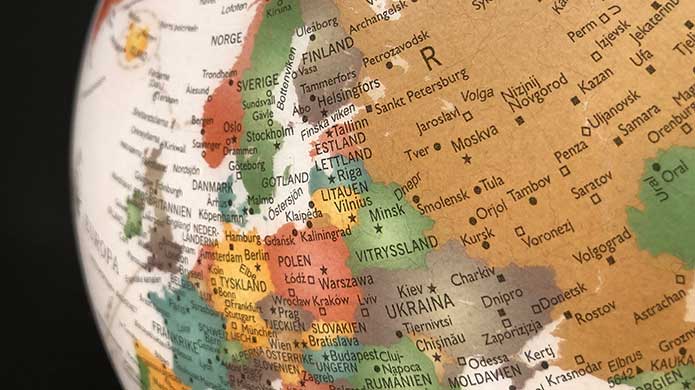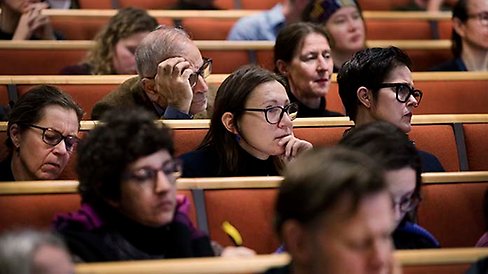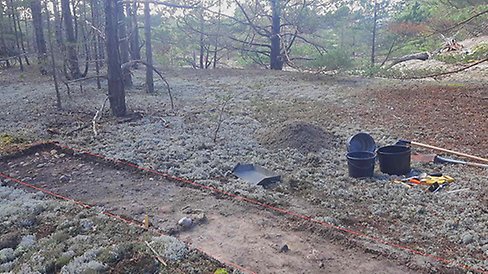The climate effects of carbon sinks & the Arctic in scientific art – 14 projects receive funding from the Foundation for Baltic and East European Studies
Fourteen projects that will receive funding from the Foundation for Baltic and East European Studies have now been selected. New for this year is that large projects were able to apply for funding, and one is among the selected projects. In this article we open the door on two projects that will be starting soon: natural carbon sinks and images of the Arctic.

Pippi Longstocking, ed-tech, motherhood. As previously, a wide variety of projects have been granted funding from the Foundation for Baltic and East European Studies. What they have in common is that, in one way or another, they all relate to the Baltic Sea region and/or Eastern Europe. The projects cover subjects such as the history of art, political science, environmental science and media and communication studies.
This year was the first time that ‘large projects’ were able to apply for funding. These are projects in which the research group has at least four researchers with a shared and coherent research task. The project must also include cooperation across subject, university and national boundaries. Martin Gullström is the project leader for Climate Change Mitigation Capacity of the Baltic Coastal Seascape, which has been awarded almost SEK 25 million over a five-year period.
“We will study natural carbon sinks, how they work, how they are linked and how they contribute to carbon compensation effects. We will focus on carbon sinks in coastal environments: wetlands, forest wetlands, reeds, seaweed meadows and other marine vegetation that can absorb carbon. We want to try to understand the function of carbon sinks in different combinations of environments in coastal seascapes around the Baltic Sea,” says Martin Gullström, associate professor of marine ecology.
Absorb and store carbon dioxide
Carbon sinks are environments that absorb and store atmospheric carbon dioxide for long periods of time, helping counteract climate change. However, disturbing these sinks can lead to emissions of greenhouse gases.
“We want to produce a carbon budget for the Baltic Sea’s coastal seascape. To understand what is released, what disappears naturally and what disappears due to human-made changes and destruction,” says Martin Gullström.
The project includes social scientists who will study climate-related management around the Baltic Sea. They will map how and where these issues are currently dealt with. Ultimately, the hope is to present an international system for blue carbon management.
From basic research to applied research
The research group has twelve researchers from Sweden, Denmark, Poland, Lithuania and Estonia. Stockholm and Gothenburg universities are represented in the project, alongside Södertörn University. Two doctoral students and two postdocs are also included in the project.
“I have worked with landscape ecology and blue carbon for about 15 years, but this project is especially interesting because we are not only looking at one piece of the puzzle. Instead, we can put together an entire jigsaw. We will be moving from basic research to applied research, to provide knowledge that can be utilised in successful climate management. It’s not often we have the funding to take a comprehensive approach, but now we do,” says the project leader.
The Arctic in scientific art
Climate issues are also reflected in Katarina Wadstein MacLeod’s project, Illustrating Neutral Nature. She will study how the Arctic was presented in the early 19th century by expeditions that travelled there.
“I am going to look at the ‘boring’ images: maps, measurements, representations of nature. The hard, scientific illustrations. I will study whether depictions of the Arctic differ depending on the expedition’s cultural background, and I’ll do this by comparing visual material from a French-Scandinavian expedition and one from Russia. Did they see the same things? My starting point is that there are no culturally neutral or values-free images of anything,” says Katarina Wadstein MacLeod, professor of art history.
The importance of pictorial representation
Contemporary debate about the climate and climate change also uses stereotypical images of the Arctic, in its attempts to get people to change their behaviour or to provide information about new research. These pictures are used in material from private companies like Volvo Cars and from organisations like the IPCC.
“My research has consistently focused on the importance of pictorial representation. Now I’m looking forward to seeing how cultural perspectives are expressed, or not expressed. It will also be interesting to see how the cooperation with indigenous peoples is retold and depicted, whether or not it was similar between the expeditions. A third thing I’m looking forward to is beginning to look at pictures of science, and the discrepancy between the scientific, the measurable, and how images of it are created though value-driven expressions,” says Katarina Wadstein MacLeod.
Page updated
29-10-2021





